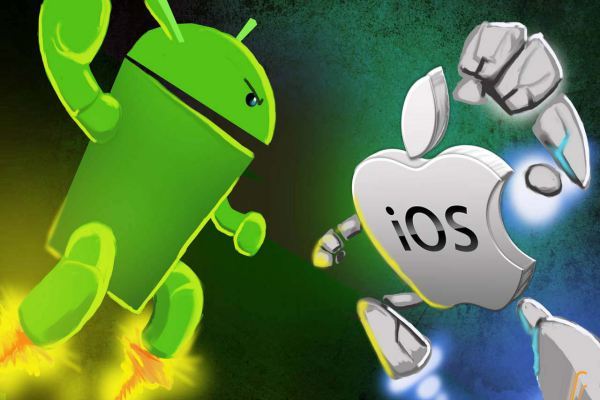Why both Google and Apple want users to install the new system?
- Tram Ho
Not long ago, Apple announced iOS 14 system update data and quickly gained 72% system market share after just 3 months of release. Meanwhile, smartphone manufacturers have yet to adapt to Android 11 and the release schedule is quite slow.

Google has also been trying to solve this problem, recently announced it will cooperate with Qualcomm to develop the Snapdragon 888 chip, in order to help smartphones equipped with these chips can support system updates. Android system and security upgrade for 4 years.
So why both Google and Apple want users to use the new mobile phone system?
Is the product competitiveness?
In the past, when we talked about Android and iOS systems, most topics were which one is better, and the main argument was based on their respective functional characteristics. Of course, iPhone and Android phone will definitely become the main topic in this process. After all, software and hardware are usually not discussed separately.
It can be seen that the operating system is really part of the power of mobile phones, and both Google and Apple are hoping to optimize the product through new features added by the system. At the same time, encourage users to continue to buy their own products or stay in their own ecosystem.
Although the two companies have some similarities in some functions in recent years, the desktop widgets introduced in iOS 14 are too similar to previous Android functions, but the difference between the two remains. not small. The open iOS operating system is still better than closed Android is one of the reasons why users choose Android or iOS.
Meanwhile, Huawei, Xiaomi, OPPO, vivo, and other mobile phone makers are using the game app store to earn income from commissions from selling items. In addition, the built-in browsers on these devices contain adverts that can affect the user experience, but that’s a way for smartphone manufacturers to survive.
For safety?
New features and design changes are often the content that gets the most attention from users, and they are also the most discussed. In contrast, security updates seem little-known, partly because security updates appear too many times in the update profile and most importantly, there’s really no difference in usage. daily use.
But do not underestimate security updates, to an extent, security is the core reason why Google and Apple want users to update the new system. After all, data stored in mobile phones is increasingly expanding, not only users’ personal information such as photos and emails, but also electronic wallets, banking applications …
Once hackers discover a system vulnerability and take control of a user’s cell phone, the loss of privacy, financial data and even money can be enormous. For Google and Apple, this can be said to be a fatal blow and the user’s confidence in it will be significantly reduced.
For technology companies like Google, Microsoft, Apple, system security is the key and one of the most important reasons for users to choose them. System upgrading is almost the most comprehensive and effective way. Of course, technology companies always hope users have updated the new system.
What kind of system update method do we need?
Although Google, Apple, and even many cell phone manufacturers are pushing new systems, users still have different attitudes towards the upgrade. People may have different opinions on whether or not to update. They worry, a new system upgrade will reduce battery life or have higher requirements for performance and will cause the phone to hang.
Of course, there are also people who are willing to upgrade the system continuously, after all, many people like to try new features, this is also one of the biggest motivations for users to upgrade the system. Furthermore, obsolete systems will also affect software usage.
Perhaps, in the future, we could see that security updates, software updates are released independently, which not only can keep old devices safe and maintain in time. but also allows some early adopters to use new features.
Longer system update maintenance cycles (about 2-3 years for Android and 5 years for iOS) and flexible update strategy are the directions tech companies need to consider, after all, are Users, no one wants to continue to use cell phone for system reasons.
Source : Genk
